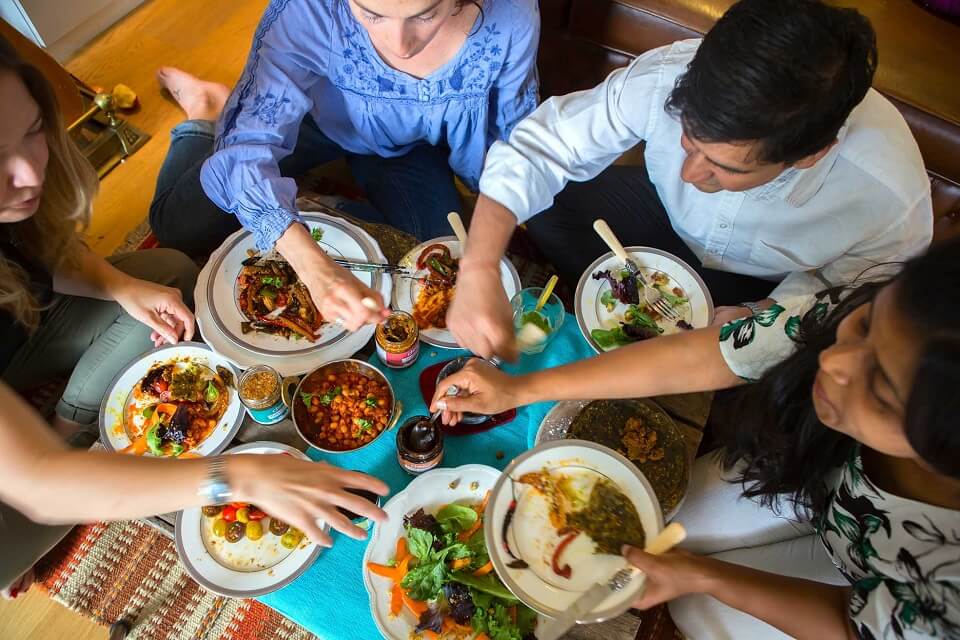“Food is not rational. Food is culture, habit, craving and identity,” Jonathan Safran Foer writes in Eating Animals. Foer is the author of Everything is Illuminated, Extremely Loud & Incredibly Close, and this 2009 nonfiction piece about eating meat in an industrialized world.
Apart from sustaining us, food is a cultural identifier. Food tells the story of a culture.
“Stories about food are stories about us―our history and our values,” Foer writes in Eating Animals.
This is one reason sharing food is so integral to cultural integration. It helps you understand a culture’s history, values, habits, and identity.
Why Share Food?
“Food culture is like listening to the Beatles,” says Alice Waters, American chef and author of The Art of Simple Food, volumes I and II, “it’s international, it’s very positive, it’s inventive and creative.”
Waters is right. Just like The Beatles, it’s almost impossible to go wrong with food. Even if you don’t like a dish (hahem, kholodets in Russia – i.e., meat jello), the fact that you even tried a strange food from a foreign land will give you brownie points in almost any local’s book.
Food forges friendships, and sharing a meal is a great icebreaker. Not only is the dinner table a “safe space” of cultural sharing – after all, you aren’t focusing on your political/cultural differences, but rather, on your shared love of food – but you’re also engaged in a new culture of eating, which is always interesting and (usually) appetizing.
Who Do You Share With?
Eat lunch with your colleagues, take your language partner up on that invitation to dinner, join a cooking class and really get into the creative process of cooking in your host culture. You’ll learn about the food culture, about your friends, and about your host country.
What Will You Learn?
You’ll learn that Russians toast numerous times – to your health, to friendship, to the host, to love. За твоё здоровье!
You’ll learn that a traditional French meal has around seven courses: an aperitif, an appetizer, the main dish, salad and cheese, dessert, coffee, and a digestif. This is why the French usually take their time to eat. No fast food culture in France.
You’ll learn that Italian coffee culture is very particular. According to Eataly, “The day is defined by coffee rituals: a cappuccino with breakfast, a caffè macchiato – or two – as an afternoon pick-me-up, and espresso after dinner…Ask for a to-go cup or order a cappuccino after 11 a.m., and risk an instant tourist label.”
You’ll learn so much about the greater whole of any culture if you pay attention to their food culture. The way food is prepared, the rituals that go along with it, and the cuisine, itself – all of this will tell you a story. And, as Foer said, “Stories about food are stories about us.”

1 comment